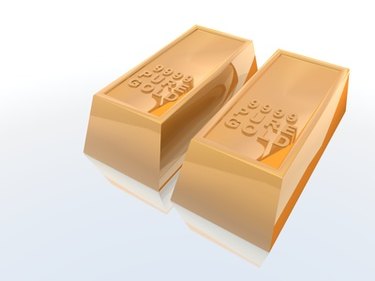
Recovery of precious metals from computer scrap is a highly specialized process that involves disassembly of the computer, separation of precious-metal-bearing components and a series of chemical processes to recover the metals. It is estimated that old computer scrap contains up to one ounce of gold per ton of scrap, which is similar to the ratio of gold in high grade gold ore mined from the earth. There is specialized equipment available from several vendors to assist with the process.
Dissasembly and Preparation of the Computer Components
Video of the Day
Step 1
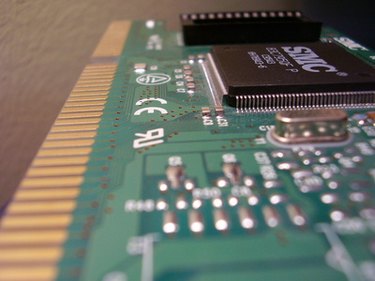
Remove the cover from the computer and remove all of the circuit boards, including the motherboard.
Video of the Day
Step 2
Remove any metal brackets, screws, heat sinks, wires, plastic clips or other extra material from the boards.
Step 3
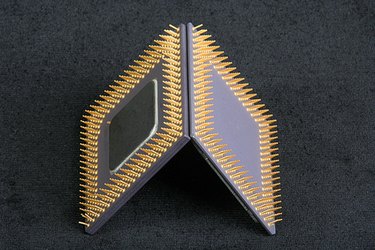
Locate and remove any chips that can be removed, including CPU chips and chips that are soldered onto the boards. These can usually be removed by running a flat-blade screwdriver along the legs or by clipping the legs with cutting pliers.
Step 4
Break off the gold fingers from all of the circuit boards carefully, using a padded set of pliers. Wrapping tape around the teeth works well.
Step 5
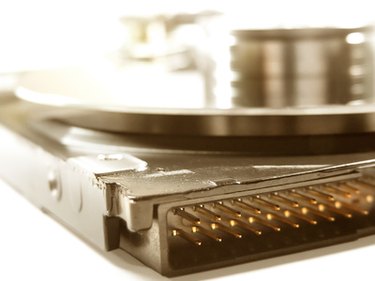
Remove any gold-plated pins and connectors by breaking the boards where the pins are. Leave a small section of circuit board attached to the pins to avoid losing any gold from them.
Step 6
Sort the remaining scrap into piles for later recovery of lesser metals and smaller amounts of precious metals. Steel, copper, zinc, aluminum, brass and other metals make up a significant amount of these items and should be recovered to maximize your profit. Stripped circuit boards have some gold but not enough to recover manually. These can be sold to recyclers who specialize in electronics recovery.
Chemical Reactions and Gold Recovery
Step 1
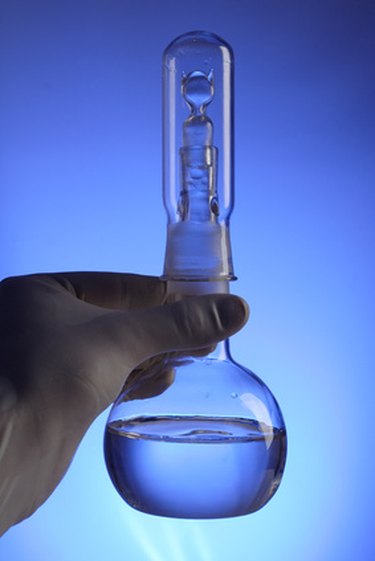
Mix sulfuric acid and hydrochloric acid in the crock pot carefully without heat to create Aqua Regia, or Royal Water, the only acid combination that actually dissolves gold. Note that the ratio for mixing these two acids will vary depending upon the source, concentration and purity of the individual acids.
Step 2
Add the gold pins and gold fingers to the acid. Keep at least an inch of acid above the scrap at all times, as some of the acid will boil off during the following steps.
Step 3
Crack open each of the integrated circuits gently, and add them to the acid.
Step 4
Turn the heat up to the lowest setting and let the mixture simmer for one hour, stirring gently with the glass rod every five minutes.
Step 5
Place a coffee filter into the plastic strainer. Slowly pour the acid, fingers, pins and chips into the filter and capture all of the acid in the casserole dish. Allow the strainer to drip for several minutes, shaking gently to avoid splashing.
Liquid Into Gold
Step 1
Place the scrap remains into the five-gallon pail for later secondary processing.
Step 2
Add a small amount of urea to the acid to bring the pH level down to normal. The amount will vary greatly with each batch, and depends upon the acid concentration and the amount of metal dissolved.
Step 3
Add the precipitant to the acid mixture slowly, stopping often to check for traces of remaining gold with the gold detection liquid as per instructions that came with the liquid. (There are several types of liquid available and each has its own particular method.)
Step 4
Allow the liquid to sit undisturbed for 24 hours so that all of the gold can precipitate and settle to the bottom of the casserole dish.
Step 5
Drain off all of the liquid carefully, making sure that none of the material on the bottom gets lost, because it is essentially pure gold. Rinse the gold with tap water. Check for any traces of ammonia with the ammonia detection liquid, and drain again.
Refining the Recovered Gold
Step 1
Place the gold mud into the crucible of the kiln and set the kiln to run for one hour above the melting point of gold.
Step 2
Pour the molten gold into the ingot mold and allow it to cool.
Step 3
Wait for the gold to cool and then remove it from the mold for weighing.